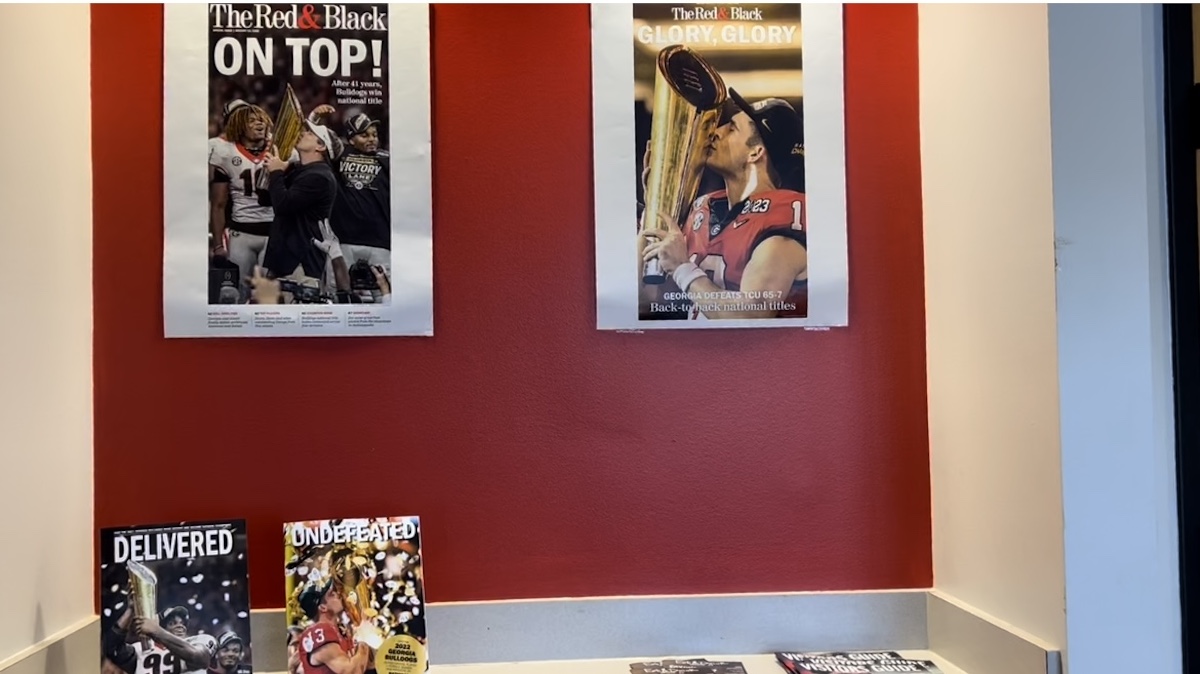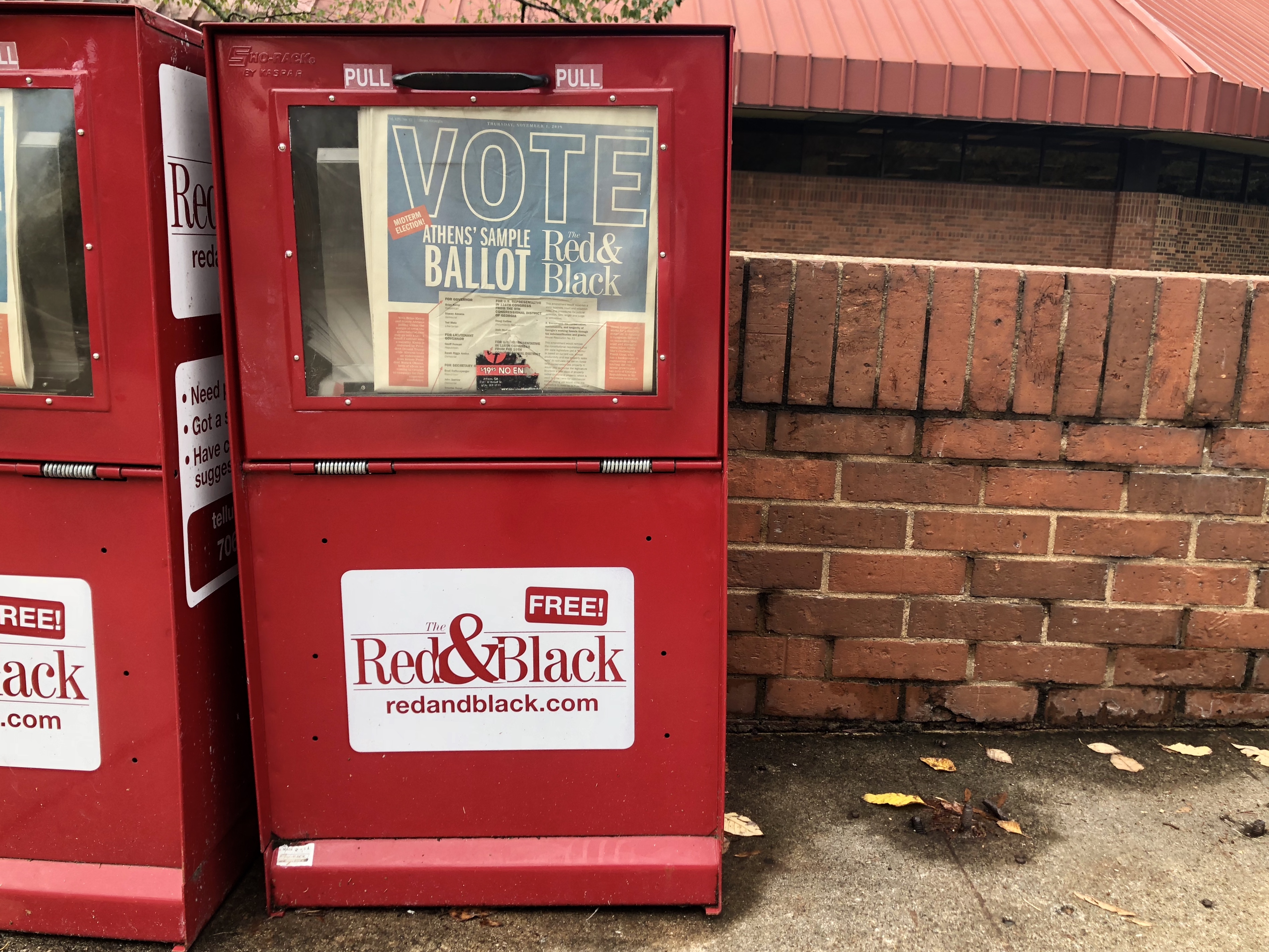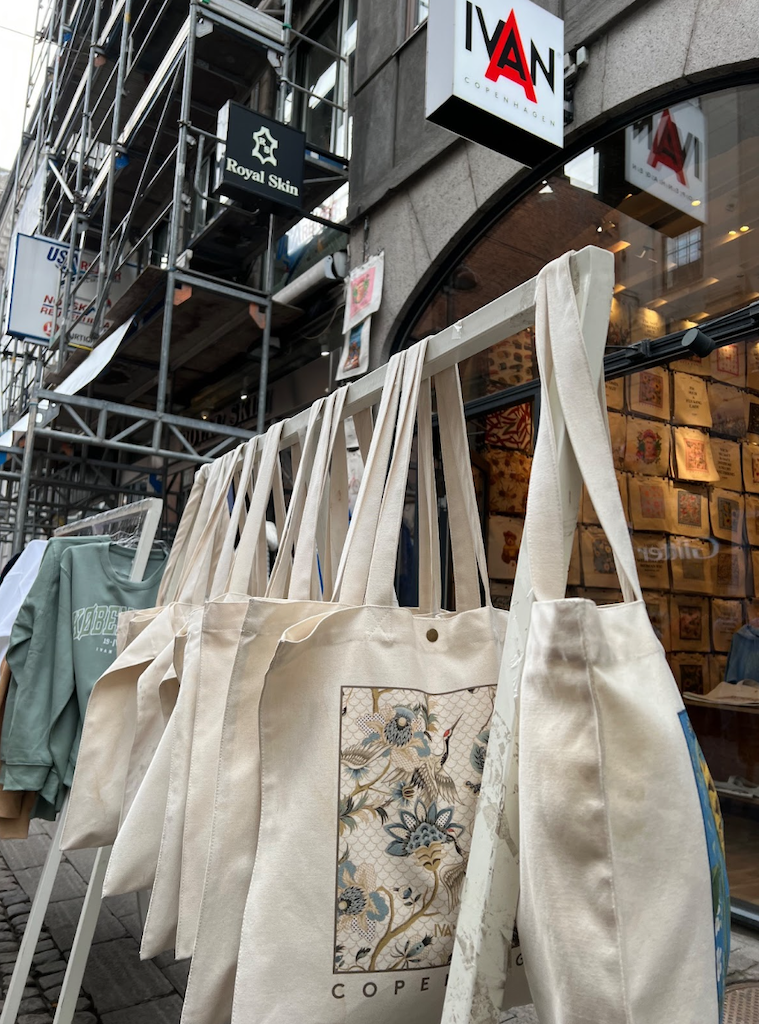The date reads January 12, 2023. The headline: “Glory, Glory.”
In a full-page photograph, just above the fold, the UGA quarterback Stetson Bennett, kisses the national championship trophy.

This was the cover of a special print edition of The Red & Black, an independent, student-run newspaper at UGA. It celebrated the Georgia Bulldogs 65-7 blowout over Texas Christian University in the college football championship game, a win that earned UGA its second straight title. Within hours, every print copy of the paper was gone, sending a new order to the press.
Weekday daily print news circulation has decreased by 19% since 1994, according to The Pew Research Center in 2020, but college newspapers continue to grow despite this trend.
Why It’s Newsworthy: Many college newspapers are fighting for more funding and experimenting with different mediums to survive.In a 2019 study, Across the Great Divide: How Today’s college students engage with News, Alison J. Head, Erica DeFrain, Barbara Fister, and Margy MacMillan reported that 76% of college students acquire their news from online newspapers.
UGA’s The Red & Black executive director Charlotte Norsworthy started working with the school’s paper when she was a student. She came back to the paper in 2021 when they switched to a digital-first paper. Norsworthy says their newspaper “is not something we’re prepared to do away with anytime soon.”  Although the Pew Research Center has found jobs in the newsroom were on a steady decline from almost 74,500 employees in 2006 to more than 30,000 in 2020, students continue majoring in journalism and other related fields. The U.S. Department of Education reported a total of 97,378 students in the field during the 2015-2016 school year.
Although the Pew Research Center has found jobs in the newsroom were on a steady decline from almost 74,500 employees in 2006 to more than 30,000 in 2020, students continue majoring in journalism and other related fields. The U.S. Department of Education reported a total of 97,378 students in the field during the 2015-2016 school year.
How It Survives
College newspapers continue to survive despite these downward trends because of the audience they can reach. Campus newspapers have the unique challenge of covering news about their university as well as the larger, surrounding community.
“I think college newspapers are absolutely crucial to a college community,” Norsworthy said. “In a lot of college communities, they are the only newspaper available to the community.”
Students and locals in college communities rely on campus newspapers, and student journalists learn the best ways to provide news to both.

The Red & Black, founded in 1893, is one of Athens, Georgia’s longest-running newspapers, with new editions coming out daily. Today, they have switched to a monthly edition.
The Red & Black’s legacy has built a community of long-time Athenians that prefer print newspapers. This community can provide donations to The Red & Black on a one-time or monthly basis, which the organization heavily relies on, since they are not funded by the university.
Norsworthy says this allows growth and change at their own pace, but make it difficult to fund new projects. Other universities include student newspapers in their annual budgets to keep them funded. Some even charge students a media fee to keep these papers running.
Advertisements
Just like any other newspaper, college newspapers rely on advertisements as another form of profit. The New York Times reported a 2.6% increase in print advertising revenue since 2022.
Based on published advertising rates for The Observer, national companies are willing to pay up to $1,240 for a full-page printed ad. There are even specific marketing agencies that focus solely on advertising toward college students such as OnCampus Advertising which reports reaching 2,500 universities with over 17 million students.
College newspapers survive as long as students keep reading their papers. In a study conducted on the University of North Texas campus newspaper, The North Texas Daily, students reported an increased score from 2013 to 2019 when asked if university news was important to them.
Keeping newspapers free has allowed more students access to papers and has kept college paper circulation up. In January 2023, The Red & Black experienced a print circulation boom like no other.
A National Championship Boom
Senior journalism student Julianne Akers was just one of the thousands of students that waited in lines wrapped around the block on Baxter Street to receive her copy of The Red & Black’s special edition paper in 2022 when the Georgia Bulldogs won their first national championship title.

“I didn’t realize how big of a deal they were,” Akers said. “I thought I could just go to a box and pull one out, and then I found that they were all gone.”
In 2023, Akers came more prepared, and so did The Red & Black. They even began to sell the papers on their own website, but in 2022, Norsworthy said they had to order new papers from the press just to meet the overwhelming demand.
“I told my students to really embrace this moment because this may be one of your only times that you’ll have someone beating down your door for a newspaper,” Norsworthy said.
Norsworthy said the experience was “unlike anything I had ever experienced in my journalistic career.” She was excited for her students, too.
We find it incredibly valuable that students understand the power of print and all the different considerations that go into it including the quality of journalism going into a print product,” Norsworthy said.
Although Akers focuses her studies on digital journalism, she shares in Norsworthy’s sentiments about the importance of student journalism.
“It’s a cool way to get a different perspective that other news media outlets wouldn’t,” Akers said.
As a learning institution, The Red & Black experiments with different types of mediums including digital, video and even podcasting. However, their roots remain in their legacy: the print paper.
“When history is made, people go to their local paper, right, to capture that moment, so I think it’s a reminder that a news organization, in general, is the first draft of history, and we got to be a part of that,” Norsworthy said.
Sarah Fredrickson is a third-year majoring in journalism.









Show Comments (2)
Manish Kumar
Bravo to the author for shedding light on the resilience of college newspapers amid the decline of print media. Their informative blog showcases the dedication and determination of student journalists, highlighting the importance of independent voices and the pursuit of truth. Well done!